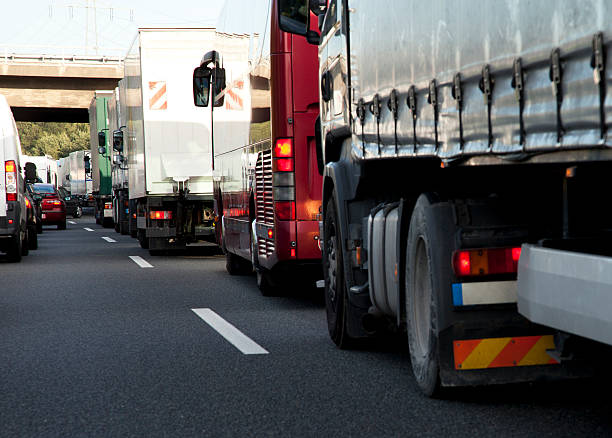Four countries have requested the European Union to set a deadline by which all new buses and trucks sold in Europe must emit no carbon dioxide. The Netherlands, Belgium, Denmark, and Luxembourg sets the request for CO2-emitting trucks.
To meet the bloc’s climate change targets, the European Commission plans to propose stricter CO2 requirements for heavy freight vehicles next month.
It has already established more challenging goals for automobiles, such as a 2035 deadline for all new cars sold in Europe to emit zero CO2.
EU to set a CO2-emitting target for heavy-duty vehicles
The four nations urged the EU to include a 100% zero emissions target for heavy-duty vehicles in its proposal next month. Although they did not give a deadline, they stated that it had to adhere to the EU’s mandate to have zero net greenhouse gas emissions throughout its economy by 2050.
The countries stated in a joint letter released on Friday that the imminent adjustment of the CO2 criteria for HDVs (heavy-duty vehicles) presents a unique opportunity to send a strong signal to the market and encourage a quick transition.
The four nations added that additional road freight vehicles should be included in CO2 limit expansion because roughly 35% of the sector’s emissions are not covered by the EU’s current CO2 standards. They also urged for a tougher 2030 emissions target for trucks and buses.
EU’s goal is to reduce net emissions by 55% from 1990 levels
The EU’s goal to reduce net emissions by 55% from 1990 levels by 2030 is in jeopardy due to the fact that transportation contributes over a quarter of the EU’s emissions and has defied the EU’s overall trend of declining CO2 output over the past three decades.
The EU environment agency reports that from 2014 until the COVID-19 pandemic delivered a temporary reduction in CO2 emissions from heavy-duty vehicles in 2020, there was an annual increase in the demand for freight transportation.
Current rules for heavy-duty vehicles in the EU
Next month’s proposal will replace the bloc’s current mandate that truck makers ensure their new fleets release 30% less CO2 in 2030 than in 2019-2020. This rule was created to encourage the sector to switch to electric or hydrogen-powered engines rather than fossil fuels.
The EU has set limits on CO2 emissions for heavy-duty vehicles, with the goal of reducing emissions and promoting the use of more fuel-efficient vehicles.
As of 2021, the limits apply to new vehicles and are based on the vehicle’s weight and type. There are also incentives in place for manufacturers to produce vehicles that exceed the emissions limits.
The EU is also implementing a monitoring system to ensure compliance with the rules and to track the emissions of individual vehicles. These regulations are in line with the EU’s commitment to reducing the carbon footprint and promoting sustainable transportation.

